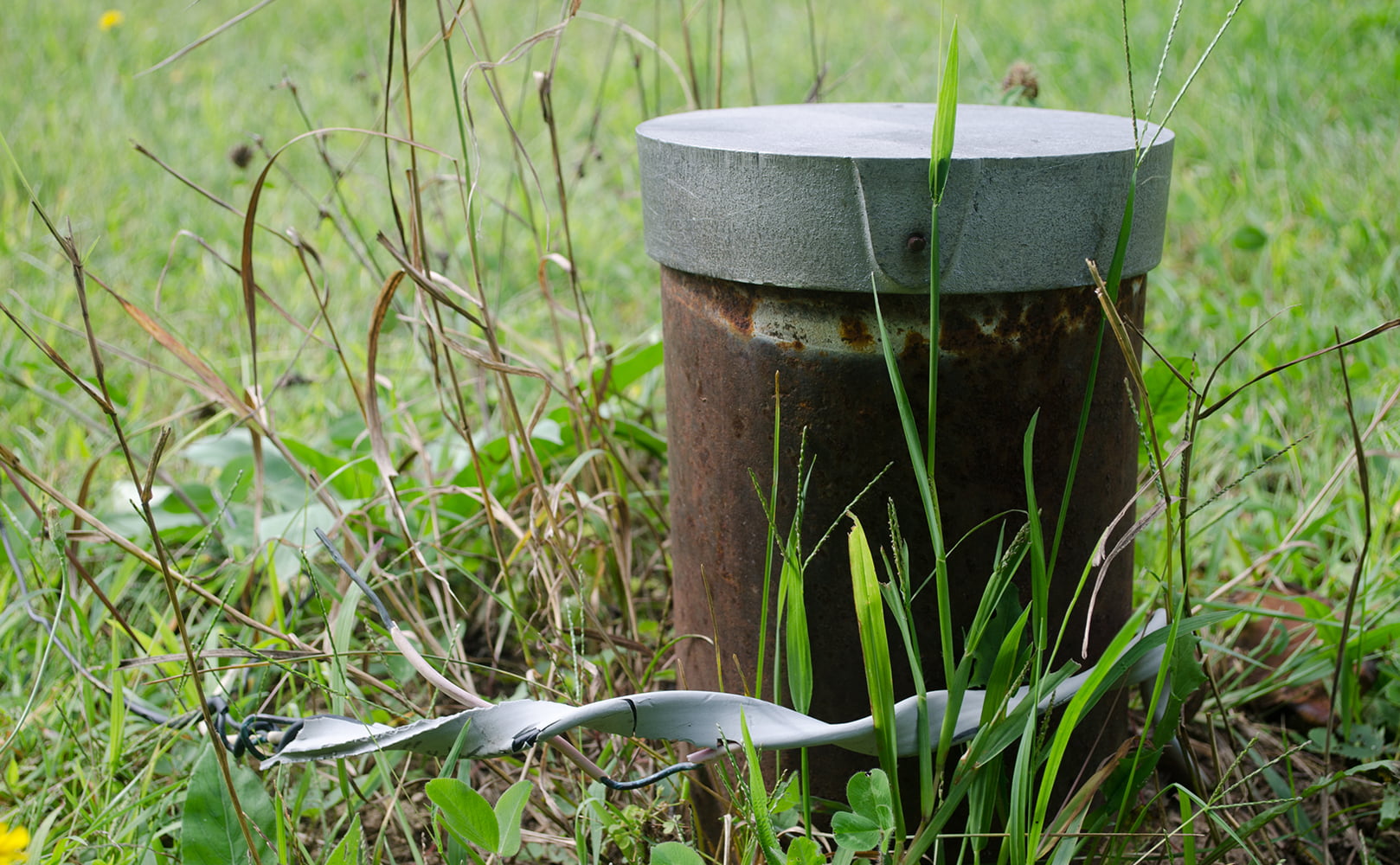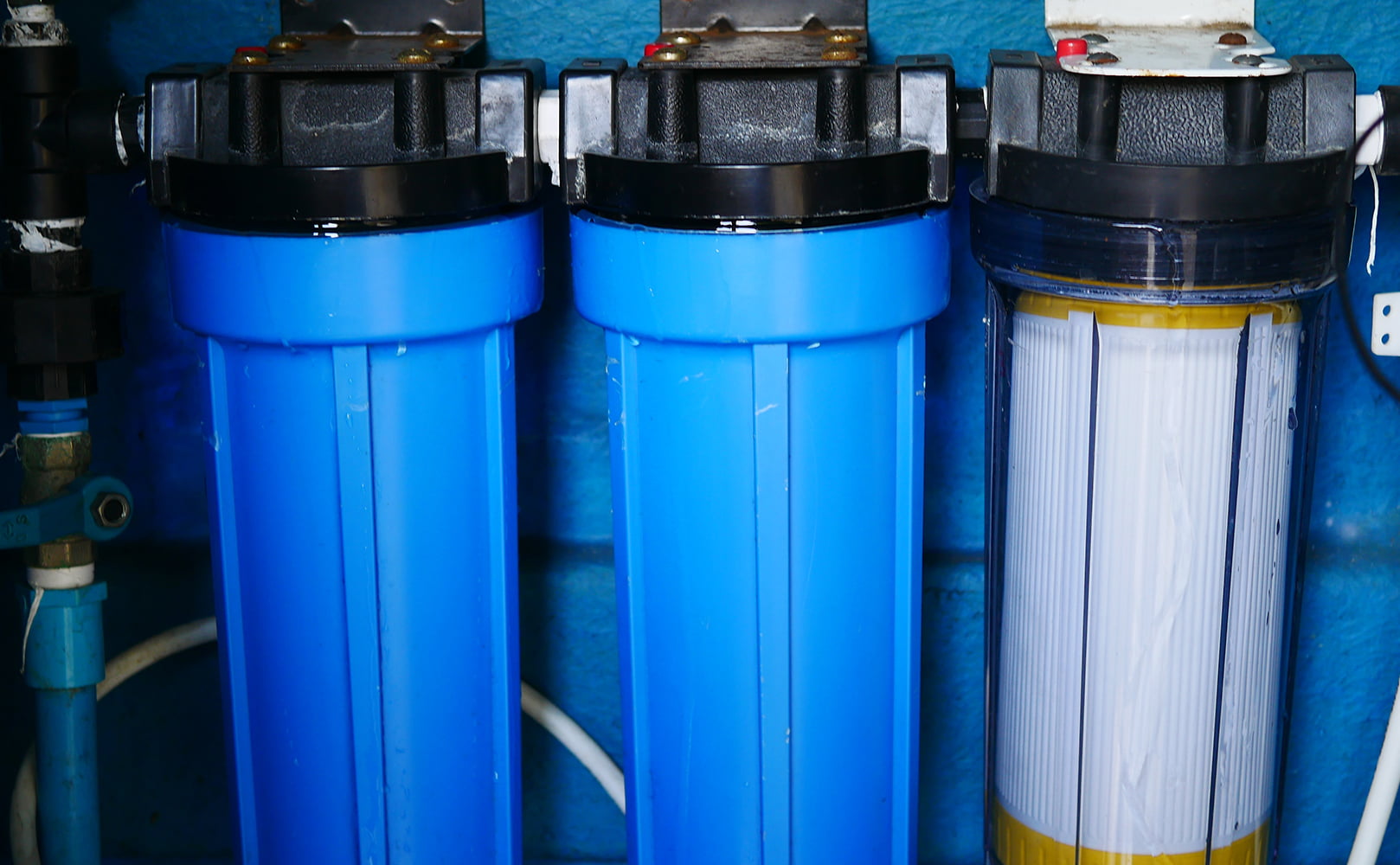Explained: Whole House Water Filter Pressure Drop
Written by: Gene Fitzgerald // Last Updated: Mar 7, 2023
This page may contain affiliate links. If you buy a product or service through such a link we earn a commission at no extra cost to you. Learn more.
Most people thinking about setting up a whole house water filter often have one unanimous concern: Will it reduce water pressure?
The concern arises from the fact that whole house filters or any point of use filter usually impose a restriction on the flow of water. This restriction can lead to a drop in water pressure.
There’s good news, though! The pressure drop isn’t always prominent or problematic.
How noticeable or troublesome it is, depends on numerous factors. Read on, and we’ll discuss these factors and tips to improve water pressure for optimum performance.
Key Takeaways
- Using a whole house water filter imposes a restriction on the flow of water and can cause a noticeable drop in water pressure.
- Ideally, the pressure drop shouldn’t be higher than 2 to 3 psi.
- If you have an undersized system or your whole house water filter is clogged, it could affect your water pressure much more.
Understanding Flow Rate & Water Pressure
Often people wonder: Are water flow and water pressure the same thing? Of course, they’re similar, but not quite the same. Water flow is how much water flows through your pipelines at any given time, while water pressure is the intensity and speed at which it flows.
In other words, water pressure is the force exercised on your water to help it run through pipes and the subsequent plumbing system. Remember, the higher the water pressure and the larger your pipes, the better the flow.
Now, how would you measure water pressure? You can ask your municipal water board to give you a reading – after all, they are responsible for making sure that the water arrives at your home under sufficient pressure. Or you can use a pressure gauge. Here’s how:
- Turn off all faucets (indoor and outdoor).
- Hook the gauge to a faucet outside your house and tighten it.
- Open the faucet all the way and look at the gauge to determine the applied pressure.
But, what about well water? Here, a pressure tank and pump are crucial elements that build up the pressure if you use water from your own private well.
Unfortunately, it is common for owners of private wells to face insufficient water pressure. To increase the pressure, you have to adjust the switch on your pressure tank. When the water pressure drops below the minimum level, the pressure switch turns on and increases the water pressure in the tank.
Factors Influencing Water Pressure/Flow
Water pressure is mainly expressed in pounds per square inch (psi). The standard psi for a household can range between 30 and 80. However, in most residential homes, around 60 psi is recommended for best flow.
Here are a few factors that influence water pressure around the house.
The Water Source
Water pressure around your house varies depending on your position with respect to the water source. This is because friction plays a vital role in any water system. For each foot of pipeline from the water utility to your location, there will be a noticeable and measurable drop in flow due to friction.
What’s more, every turn, every fitting, every filtration system, i.e., any limitation, no matter what, shall cause an energy loss produced by the water system’s pumps.
Water pressure is also influenced by the altitude of the water tower in your city, in case there is one; and by gravity. To elaborate, as water gushes down a height, it gains more speed.
FYI: Water tanks can be found in suburbs and rural areas alike. They are used to ensure sufficient water during periods of peak consumption. Plus, they stabilize water pressure throughout the day.
Speaking of…
Time of the Day
Water pressure will be considerably higher at odd times of the day and lower at peak hours. This is based on the basic principle of demand and supply. As more water is consumed simultaneously around town, pressure will decrease.
This usually happens especially in spring and summer, as more people fill their pools and generally use more water.
Multiple Water Outlets Running at the Same Time
At a time when people are simultaneously using water in your home, low water pressure can be expected – think having guests at the house.
Wrong Size of Pipes
Having smaller pipelines in your plumbing system in comparison to your water demand will significantly impact water pressure. Moreover, any clogs or buildup in your plumbing will also limit the flow of water.
Do Whole House Water Filters Reduce Water Pressure?
A whole house water filtration system can lead to a drop in water pressure if:
- It’s not the correct size for your household, or
- The filter elements are clogged.
We suggest consulting a water professional to help you select a system that causes the standard 2-3 psi pressure drop but no more. Remember, this drop is associated with clean filters, not cartridges clogged with dirt and sediments.
Undersized System
An undersized whole house filter system will have a negative impact on water pressure around your house. Regardless of how efficient the unit works or the feed water pressure, a system that is not designed to cater to your daily water requirements will lead to a noticeable drop in pressure around the house.
Thus, you need to figure out the maximum flow rate in gpm (gallons per minute) for your household. Here is a breakdown to help you get an estimate.
- Bathroom taps: 1 gpm
- Kitchen faucets: 1.5 gpm
- Shower heads: Up to 2.5 gpm
- Toilets: 3.0 gpf (gallons per flush)
- Washer: 25.0 gpl (gallons per load)
- Dishwasher: 6.0 to 16.0 gpl (gallons per load)
Depending on the number of family members, water-based appliances, and flow rate of each water outlet, you can estimate the correct peak flow rate for your home and match that with a whole house filter system.
A Clogged Whole House Water Filter
As water passes through a filter, it traps all kinds of contaminants and impurities. Over time, the filter becomes clogged, due to sediment or mineral accumulation or example. The more the restriction, the more time the water takes to pass through the filtering stage, thus affecting water pressure and flow.
Some advanced filtration systems use pressure gauges to estimate the change in pressure when water enters and leaves the system. It helps you determine when to replace the cartridge(s). Because timely replacement of filter cartridges is key to maintaining stable water pressure.
It is also quite possible that your whole home filtration system is simply unsuitable for your water conditions. For example, using an ultrafiltration filter to treat water laden with sand, silt, scale, and rust without proper pre-treatment will cause the filter element to clog in no time. Not only will this lead to poor filtration, it also means you might not get more than a trickle of water in the shower.
This is why we always advise getting an independent water test to determine which whole house water filter is best for your water problems.
Tips for Improving Your Water Pressure
Consistent water flow all over the house is something we all take for granted. No one wants to be in a situation where they have to withhold a bath if the dishwasher is running.
Similarly, have you ever been in the situation when you were taking a shower and the water pressure suddenly went down? Now you are stuck with no water, and the shampoo’s stinging your eyes. Not funny!
That’s the scenario we are talking about.
So, if you experience a drop in water pressure at any point in time, you must immediately rectify the problem. A pressure drop usually signifies that something is obstructing the flow of water.
The good news, you can use these tips to improve your situation:
Valves
Sometimes the solution is so simple; we tend to overlook it. Many people have found that the problem of low water pressure was solved simply by opening their valves completely. Not any valves, though. We are strictly talking about these:
- Main feed valve near the water meter
- Your home’s main shutoff valve
Usually, while replacing water filters or any other plumbing work, we are advised to open the valve slowly to prevent a surge of water pressure. It is possible that the last time you opened the valve, you opened it just midway. We suggest you check the valves first before going for the more complex solutions.
Pipes
If your house runs on hard water (almost 75% of Americans do), your plumbing might have developed a thick layer of scale over time, due to minerals deposits.
This buildup severely constricts water flow, and you’ll notice a gradual pressure drop. You can try using a salt-free water softener to dissolve the buildup. But these units don’t work with all water conditions.
As a last resort, you will need to replace the clogged pipes.
Faucets and Fixtures
Are you experiencing water drops only in certain areas like the kitchen sink or your showerhead? It is highly likely that there is a problem with this specific outlet, channel, or fitting.
The individual tap might have:
- An obstruction that is restricting water flow
- A build-up of scale due to hard water
- Faulty parts
Examine the water outlet and try to replace blocked components to improve pressure. Similarly, you can use a vinegar solution to soak them. Vinegar will help dissolve limescale deposits that may have hardened and could be affecting water flow.
If you have any questions about whole house water filter pressure drop please don’t hesitate to leave a comment below!
Information provided on BOS is for educational purposes only. The products and services we review may not be right for your individual circumstances.
We adhere to strict editorial guidelines. Rest assured, the opinions expressed have not been provided, reviewed, or otherwise endorsed by our partners – they are unbiased, independent, and the author’s alone. We fact-check all content for accuracy. It is accurate as of the date posted and to the best of our knowledge.



